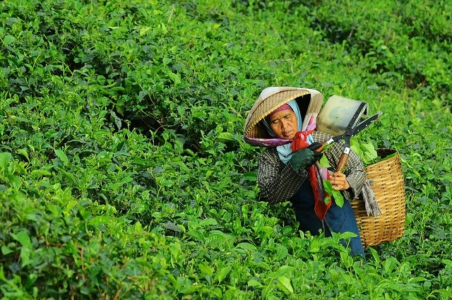SVAMITVA scheme
Context:
Survey of India to use drones for mapping of inhabited areas of villages under “SVAMITVA” scheme
Key Highlights:
- Ministry of Civil Aviation (MoCA) and Directorate General of Civil Aviation (DGCA) have granted conditional exemption to Survey of India (Sol) from Unmanned Aircraft System (UAS) Rules, 2021.
- The drone deployment permission has been granted for large scale mapping of inhabited areas of villages under the central government scheme – Survey of villages and Mapping with Improvised Technology in Village Areas (SVAMITVA).
- This exemption is valid for a period of one year from the date of approval or until further orders, whichever is earlier and shall be subject to the terms and conditions of the SOP (issued by DGCA).
- The demarcation of Abadi areas (the Abadi area includes inhabitant land, inhabited areas contiguous to Abadi and wadis/basties in rural areas) would be done using Drone Surveying technology, with the collaborative efforts of the Ministry of Panchayati Raj, State Panchayati Raj Department, State Revenue Department.
- This permission grant will allow Large Scale Mapping (LSM) by Survey of India using drones.
- The aerial surveillance would generate high resolution and accurate maps to confer ownership property rights. Based on these maps or data, property cards would be issued to the rural household owners.
- The digital spatial data/maps created under drone survey will be leveraged for the creation of the spatial analytical tools to support preparation of the Gram Panchayat Development Plan (GPDP). The images captured through Drones would be processed by Survey of India in its Geographic Information System lab.
About SVAMITVA Scheme:
SVAMITVA (Survey of villages and mapping with improvised technology in village areas) Scheme is a Central Sector scheme launched by Hon’ble Prime Minister of India on National Panchayat Day i.e 24th April 2020. The Ministry of Panchayati Raj (MoPR) is the Nodal Ministry for implementation of the scheme. In the States, the Revenue Department / Land Records Department will be the Nodal Department and shall carry out the scheme with support of State Panchayati Raj Department. Survey of India shall work as the technology partner for implementation.
The scheme aims to provide an integrated property validation solution for rural India. The demarcation of rural abadi areas would be done using Drone Surveying technology. This would provide the ‘record of rights’ to village household owners possessing houses in inhabited rural areas in villages which, in turn, would enable them to use their property as a financial asset for taking loans and other financial benefits from Bank
Objectives
- To bring financial stability to the citizens in rural India by enabling them to use their property as a financial asset for taking loans and other financial benefits.
- Creation of accurate land records for rural planning.
- Determination of property tax, which would accrue to the GPs directly in States where it is devolved or else, add to the State exchequer.
- Creation of survey infrastructure and GIS maps that can be leveraged by any department for their use.
- To support in preparation of better-quality Gram Panchayat Development Plan (GPDP) by making use of GIS maps.
- To reduce property related disputes and legal cases
Coverage
There are about 6.62 lakh villages in the country which will be eventually covered in this scheme. The entire work is likely to be spread over a period of five years.
Pilot phase
The pilot phase is scheduled during 2020-21. Pilot Phase extends to six pilot States (Haryana, Karnataka, Madhya Pradesh, Maharashtra, Uttar Pradesh and Uttarakhand) covering approx. 1 lakh villages and CORS network establishment is planned for two States (Punjab And Rajasthan).
*For the States, which have already done Abadi surveys, the scope and the process of the survey will be decided in Phase II (post Pilot Phase), in consultation with the States and SoI.
Scaling up phase
Full coverage of nearly 6.62 lakh villages in India and establishment of an extensive CORS network with 567 CORS stations.
A Continuously Operating Reference Stations (CORS) network provides regional positioning service. In CORS Infrastructure, the corrections to the map are instantly sent to the rover receiver from control centre which helps to find very accurate positioning of rover in real me. CORS plays a major role in achieving centimetre accuracy positioning in many applications, for example, cadastral mapping, land information management, large scale mapping, fleet management, tracking and navigation etc which is otherwise not possible with traditional methods.
Various Stages in SVAMITVA Scheme & its Glimpses
Expected outcome
The outcome from the scheme would include updating the ‘record-of-rights’ in the revenue/property registers and issuance of property cards to the property owners. This would facilitate monetization of rural residential assets for credit and other financial services. Further, this would also pave the way for clear determination of property tax, which would accrue to the GPs leading to better civic amenities.
Stakeholders for scheme implementation
The following stakeholders would be involved in carrying out the scheme:
- Nodal Ministry (Ministry of Panchayati Raj), Govt of India.
- Survey of India (Technology Implementation Agency)
- State Revenue department
- State Panchayati Raj Department
- Local district authorities.
- Property owner
- Gram Panchayat (GP).
- National Informatics Centre (NIC) – GIS Division
- Other line departments having assets in Rural inhabited areas (if any) for preparing comprehensive database.
Relatied Article

